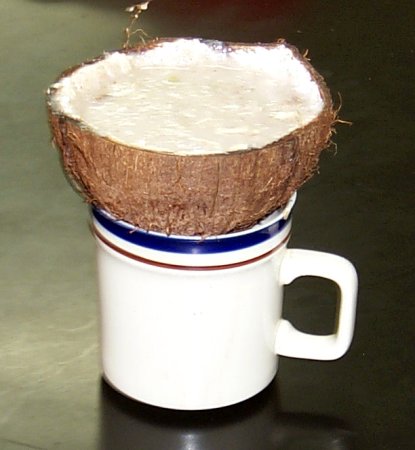

A fish stew made with apact usr (a type of banana). The banana is ground prior to cooking. Stew, or soup, is a traditional dish at funerals and on Sundays. The color of the sup is more purple-hued than is captured above. The soup is served in a local coconut dish.
Usr apact is either Inahsio poh rotorot or inahsio mweimwei or inahsio pehsehs on Pohnpei.
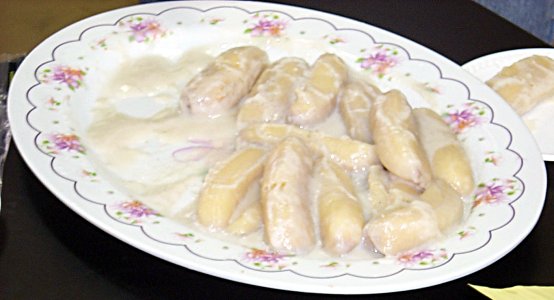
Boiled uhtin ruk (Chuukese banana, alternative spelling utin ruk) covered with coconut milk. Banana may be perceived to have originated in Chuuk.
On Kosrae uhtin ruk is called apact fusus.
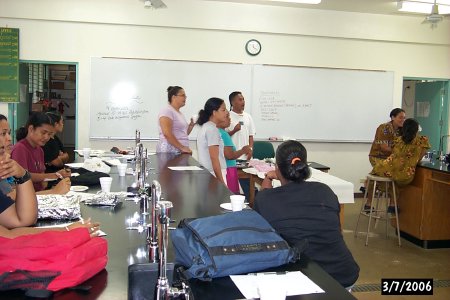
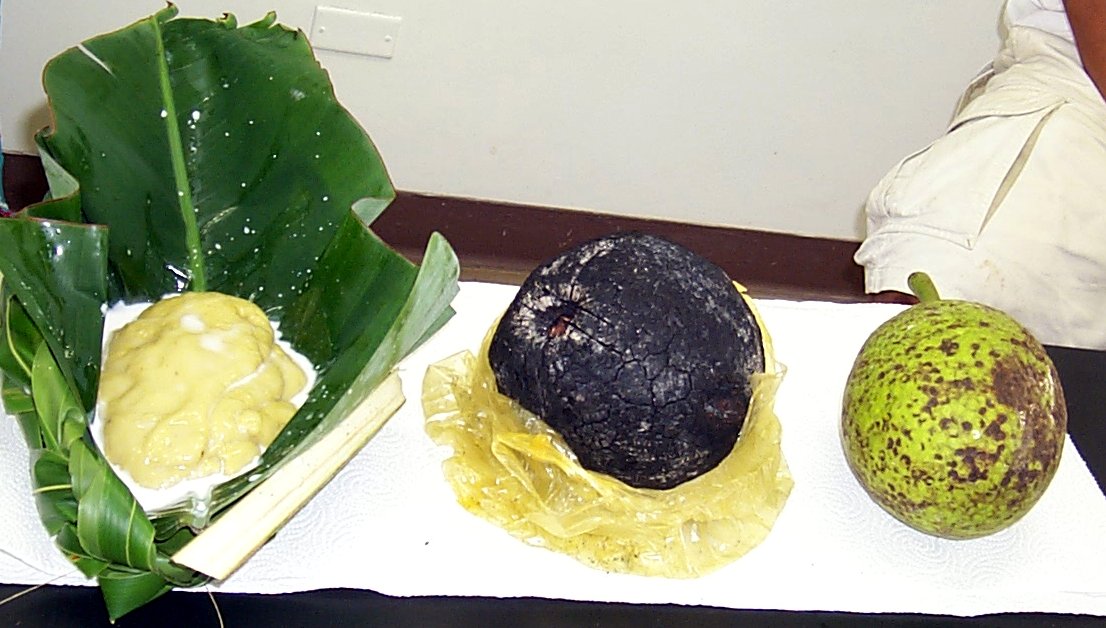
Lihli is produced from breadfruit and coconut. The breadfruit is harvested, the stem of the fruit is removed, and a stick is used to make a hole where the stem was located. Konok (Piper ponapense) is placed in the hole. Then the breadfruit are covered with large leaves such as banana or wild taro overnight. These produces accelerated ripening. The next day the fruit are cooked in an open fire producing a blackened breadfruit. The skin is removed and the cooked interior is pounded while still hot to a very smooth consistency. Coconut milk from the squeezing of the grated coconut is put on top of the breadfruit.
Producing lihli is a joint effort. Men climb the tree, gather the breadfruit, and prepare them for ripening. The next day men cook the breadfruit. Women may do the peeling. Men then usually pound the breadfruit, although woman can also apparently do this work. The work of grating the coconut is usually done by a woman.
In the image above the lihli is presented traditionally, served on a banana leaf in a woven coconut palm frond plate.
Traditional foods often feature shared labor in the production of food for the family. Nontraditional foods, especially imported foods, are often only processed for eating by women. This represents a tremendous shift in labor patterns within the family. The "modern" concept of the woman as being in charge of the "kitchen" is a nontraditional concept from foreign cultures. The Micronesian tradition is of men and women working together in a partnership in the production of food for the family, including cooking. Men built fires and cook with the uhm.
One cannot prepare lihli unless one has already given their Nahnmwarki their lihli nopwe - their "first fruits." There is a season in which one can prepare lihli and then present the lihli to the Nahnmwarki. Only after this can families make and eat lihli for themselves.
Although in class only the Pohnpeian students reported their culture as making a hole in breadfruit and using other plants to speed ripening, this writer would later learn that older Kosraens do the same thing to make sokack mos. This appears to possibly be yet another part of the loss of knowledge among the youth of Kosrae.
The placing of plants such as konok in the hole speed ripening. The leaves, bruised and slightly damaged in their removal, undoubtedly emit ripeners, possibly including ethylene.
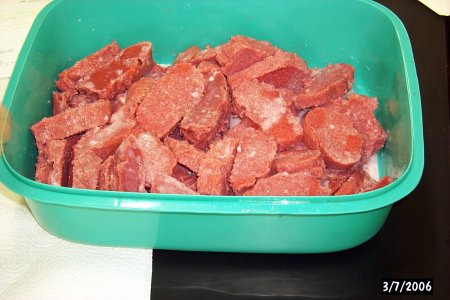
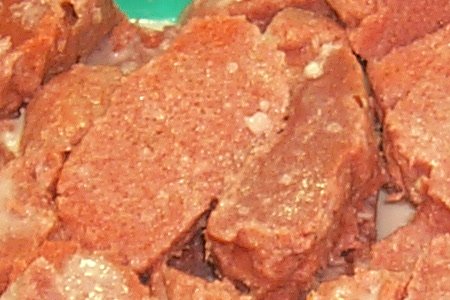
Southern [Noumeneas] and Faichuuk refer to this dish as feiren uuch, Northern [Noumeneas] refer to this dish as amatān uuch. Made from bananas. The bananas are grated, sugar and food color is added, and then the mixture is wrapped in foil and boiled. Coconut milk is added to the top when done.
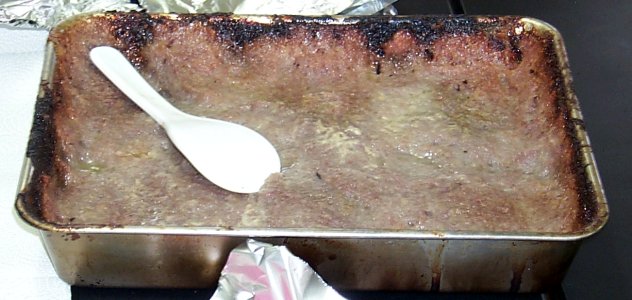
Manila and inahjio (Pohnpeian: inahsio) bananas are ground and mixed with tapioca starch, sugar, water, and coconut milk. Mix will have to be tasted for sweetness. Then baked in a pan in an uhm, prior to pans in a banana leaf in an uhm. This is an important food, not eaten every day, but only on special occasions, gatherings, and social events. A Mwoakillese woman is culturally expected to know how to make pihlohlo.
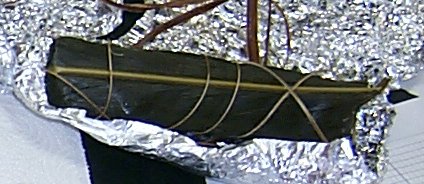
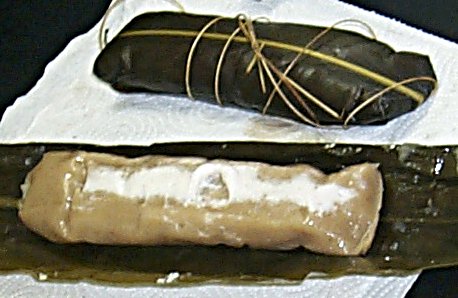
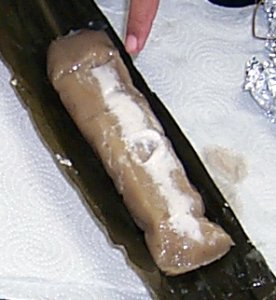
Fermented breadfruit in a Cordyline fruticosa (ti plant) leaf. Once fermented, breadfruit has an extremely long storage life.
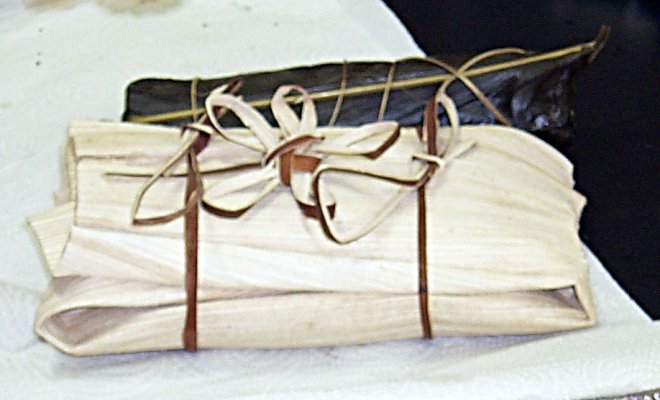
Above the thow (a breadfruit with grated coconut and "tumeric" [possibly yellow ginger?] dish) is wrapped in a betel nut palm frond base.
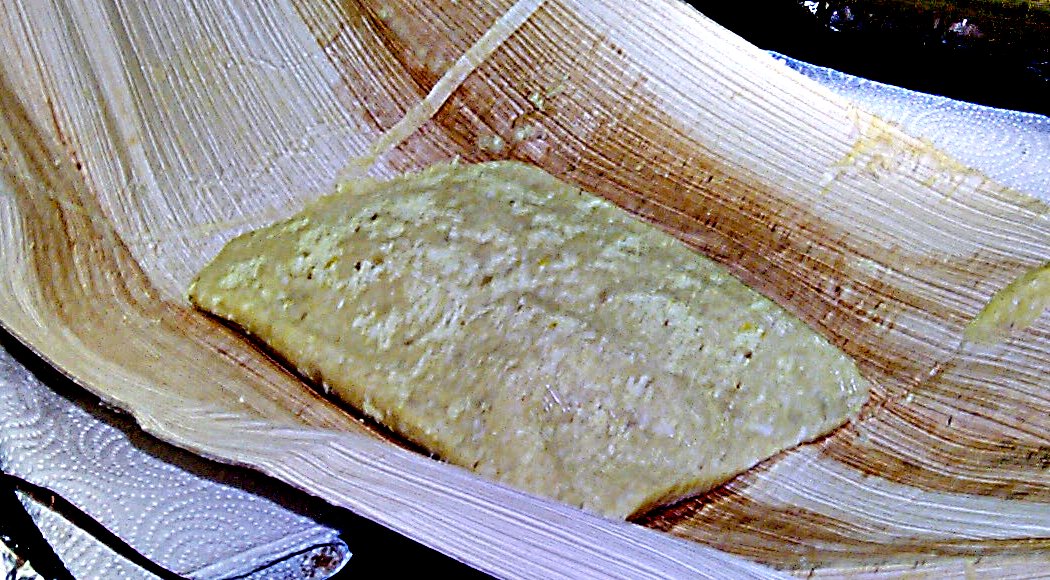
In the above image, enhanced to bring out surface features, the texture of the betel nut frond can be seen along with the surface texture of the thow. The surface enhancement process desaturated the color of the thow.
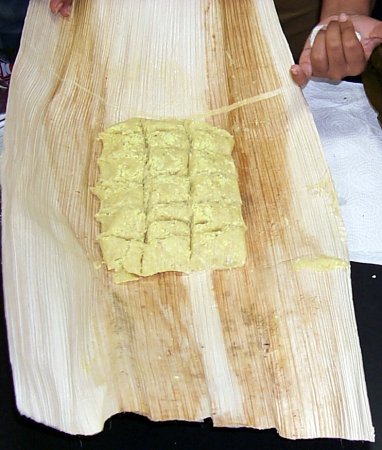
Above the thow is being cut, the colors are closer to the actual bright yellow color.
The attention to detail even in the presentation of the food can be noted in this detail on the packaging bow:
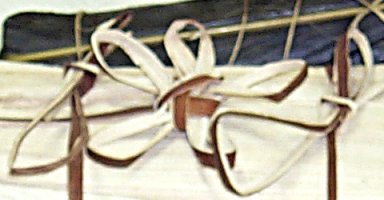
The class was visited by Nieve Shere of the New York Botanic Garden and members of the ethnobotany project including Francisca Sohl and her team. Francisca's team was recently expanded with the addition of a Peace Corps volunteer, Julie, who also observed the class.
Ethnoherb • Ethnobotany • Lee Ling • COMFSM